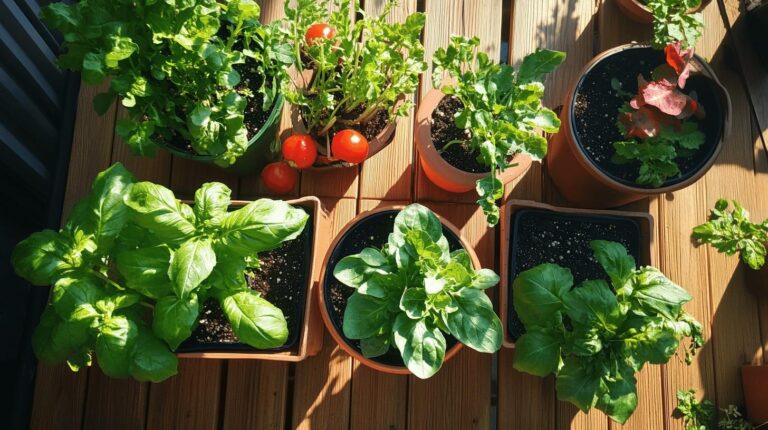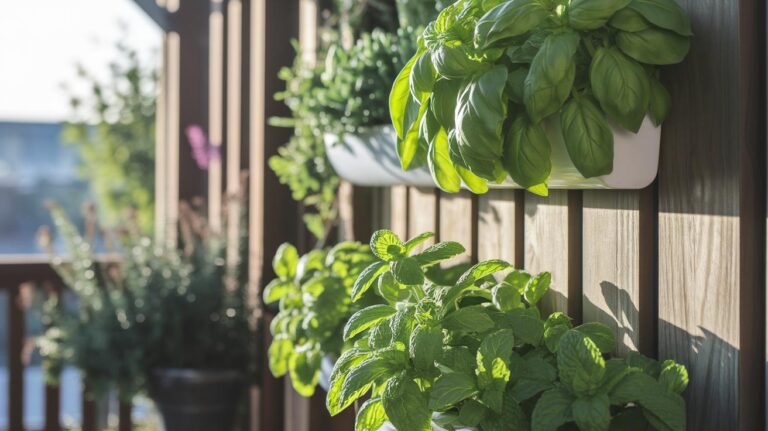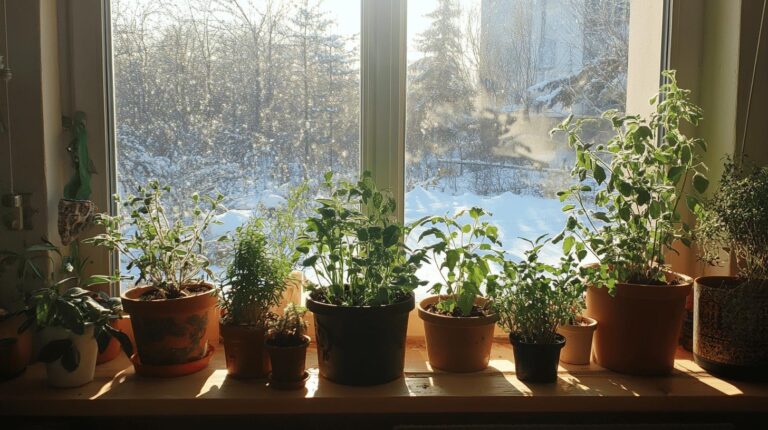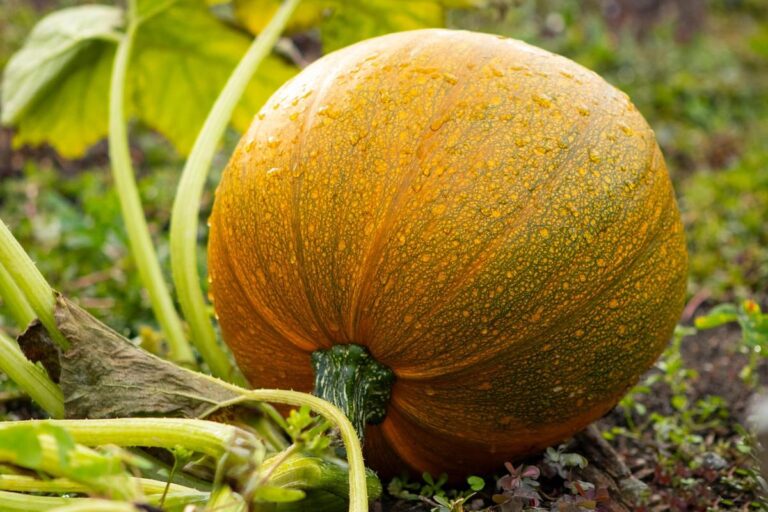The Complete Guide to Indoor Hydroponic Herb Gardens: Fresh Herbs Year-Round
Have you ever dreamed of snipping fresh basil for your morning omelet or grabbing mint for an evening tea? With indoor hydroponic gardening, that dream becomes reality. You don’t need a sprawling backyard or even a sunny windowsill to grow vibrant, flavorful herbs. Instead, you can transform any quiet corner of your home into a thriving green oasis.
Hydroponic gardening—growing plants in nutrient-rich water instead of soil—offers incredible advantages for busy home cooks and gardening enthusiasts alike. Your herbs will grow up to five times faster than traditional soil methods, require significantly less water, and completely eliminate common soil-borne pests. Plus, there’s something magical about watching bright green sprouts emerge from seed pods under the gentle glow of LED lights.
Whether you’re a complete beginner or an experienced gardener looking to expand indoors, this comprehensive guide will walk you through everything you need to know about creating your own hydroponic herb garden. From choosing the right system to maintaining healthy plants year-round, you’ll discover how simple and rewarding indoor herb growing can be.
Understanding Hydroponic Systems: Finding Your Perfect Match
Before diving into specific equipment, it’s essential to understand the various hydroponic systems available. Each type offers unique benefits, so choosing the right one depends on your space, budget, and growing goals.
Deep Water Culture (DWC) represents the simplest entry point into hydroponics. In these systems, plant roots float directly in oxygenated, nutrient-rich water. An air stone continuously bubbles oxygen through the solution, keeping roots healthy and promoting rapid growth. Most DWC kits cost under $100, making them perfect for first-time hydroponic gardeners who want to experiment without a major investment.
The Kratky Method takes simplicity even further by eliminating pumps and timers entirely. This passive system relies on plant roots gradually consuming water and nutrients, naturally creating an air gap for root oxygenation. While incredibly low-maintenance, the Kratky method works best for leafy greens and herbs with shorter growing cycles.
For those seeking more control, Ebb and Flow systems periodically flood growing trays with nutrient solution before draining back to a reservoir. This cycle provides roots with both nutrients and oxygen, though you’ll need to monitor timers and adjust flooding schedules based on plant growth stages.
Nutrient Film Technique (NFT) systems create a thin stream of nutrient solution that continuously flows over roots. While highly efficient, NFT systems require regular maintenance to prevent clogs and ensure proper water flow.
Aeroponic systems take a high-tech approach by misting plant roots with nutrient solution. These systems promote explosive growth but require more investment and technical knowledge to operate successfully.
Finally, vertical tower gardens maximize growing space by stacking planting sites vertically. Though they require a larger upfront investment and more floor space, towers can accommodate dozens of plants in a surprisingly compact footprint.
Essential Components for Your Indoor Setup
Successfully growing herbs hydroponically requires four key components working in harmony: lighting, water circulation, growing medium, and environmental controls.
Lighting forms the foundation of indoor growing success. Full-spectrum LED grow lights provide the energy plants need for photosynthesis while remaining energy-efficient and long-lasting. Look for lights producing 20 to 40 watts of power, which provides adequate illumination for most herbs without generating excessive heat. Adjustable height arms allow you to position lights optimally as plants grow, starting close to seedlings and raising them as herbs reach maturity.
Modern LED systems include built-in timers that automatically cycle lights on and off, mimicking natural daylight patterns. Most herbs thrive with 14 to 16 hours of daily light exposure. Pro tip: plug in your system first thing in the morning so lights operate during daytime hours rather than keeping you awake at night.
Water and nutrient delivery systems keep your herbs properly fed and hydrated. Choose dark-colored reservoirs to prevent algae growth—algae loves light but can quickly overwhelm your nutrient solution. Small circulation pumps (5 to 15 watts) or air pumps keep water moving and oxygenated, preventing stagnation and root rot.
The growing medium provides physical support while allowing roots to access water and nutrients. Popular options include expanded clay pebbles, coconut coir (coco coir), and rockwool cubes. Each medium offers excellent drainage while retaining enough moisture for steady root growth.
Control systems automate watering cycles and maintain optimal growing conditions. Timers ensure consistent watering schedules, while filters remove debris from circulating water. Removable components make monthly cleaning quick and hassle-free.
Here’s a quick reference for typical component costs:
| Component | Function | Price Range |
|---|---|---|
| LED Grow Lights | Full-spectrum plant lighting | $30 – $80 |
| Reservoir & Pumps | Water storage and circulation | $10 – $30 |
| Growing Medium | Root support and moisture retention | $5 – $20 |
| Nutrient Solution | Essential plant nutrition (N-P-K) | $15 – $30 |
| Controls & Timers | Automation and debris filtering | $10 – $25 |
Regular maintenance keeps everything running smoothly. Clean LED lights monthly to maintain brightness, and rinse reservoirs every two weeks to prevent algae buildup. Replace growing media between growing cycles to avoid salt accumulation, and mix fresh nutrient solutions weekly for optimal plant health.
Managing Nutrients and pH for Optimal Growth
Understanding water chemistry might sound intimidating, but it’s actually quite straightforward once you learn the basics. Most kitchen herbs prefer slightly acidic conditions with pH levels between 5.5 and 6.5. This gentle acidity allows plants to efficiently absorb essential nutrients.
Testing pH is simple using either paper test strips or digital pH meters. Check levels each morning while you drink your coffee—it only takes a minute and becomes part of your daily routine. When pH drifts outside the optimal range, herbs can develop nutrient lockout, showing symptoms like yellow leaf edges or stunted growth.
Electrical conductivity (EC) measurement tells you how concentrated your nutrient solution is. An EC meter measures dissolved salts in millisiemens per centimeter (mS/cm). For leafy herbs and greens, aim for readings between 1.2 and 1.8 mS/cm. This ensures adequate nutrition without overwhelming sensitive roots.
You can either purchase pre-mixed hydroponic nutrients or create your own solution. Commercial formulations come clearly labeled with N-P-K ratios and mixing instructions—simply follow the directions for foolproof results. For DIY enthusiasts, a basic formula includes three parts nitrogen for lush leaf growth, one part phosphorus for strong roots, and two parts potassium for overall plant health.
Water quality significantly impacts plant health. Most municipal tap water contains chlorine or chloramines that can harm beneficial root microbes. Let tap water sit in an open container for 24 hours to allow these chemicals to dissipate, or run it through a small UV filter before adding nutrients.
Adding beneficial microbes (helpful bacteria and fungi) can boost root health and prevent diseases. These microscopic allies create a thriving root zone ecosystem that supports vigorous herb growth.
Test pH and EC daily during your morning routine, making small adjustments as needed. Sudden changes stress plants, so make gradual modifications to maintain stable growing conditions.
Lighting Solutions That Actually Work
Proper lighting can make or break your indoor herb garden. Understanding your options helps you choose systems that will reliably produce healthy, flavorful herbs year-round.
Full-spectrum LED lights provide the complete range of wavelengths plants need for optimal growth. Blue light encourages compact, bushy growth in young plants, while red light promotes flowering and fruiting in mature herbs. Quality LED systems combine both wavelengths to support plants throughout their entire lifecycle.
Light positioning and timing matter tremendously. Keep LED panels 6 to 12 inches above plant tops to provide adequate intensity without causing heat stress. Look for lights mounted on telescoping arms or adjustable stands that move with your growing plants.
Most successful indoor gardeners run lights for 14 to 16 hours daily. Built-in timers automate this schedule, ensuring consistent photoperiods that plants need for healthy development. Some advanced systems include “eco modes” that reduce power consumption during peak electricity hours while maintaining plant health.
Fan-cooled LED units run quietly and efficiently, making them suitable for kitchen counters or living spaces. Proper cord management keeps your growing area neat and prevents tripping hazards—a simple binder clip can route cables safely behind your system.
Top Herb Varieties for Hydroponic Success
Not all herbs adapt equally well to hydroponic growing, but these five varieties consistently deliver excellent results for indoor gardeners.
Basil reigns supreme as the ultimate hydroponic herb. Sweet basil, Thai basil, and purple basil all thrive in pH ranges of 5.8 to 6.3 with 14 hours of daily light. Start harvesting when stems reach 4 inches tall by pinching off the top two leaves—this encourages bushy, multi-stemmed growth. Regular harvesting keeps plants productive for months, and you’ll have fresh basil ready in just 4 to 6 weeks from seed.
Mint varieties bring refreshing flavors to beverages and dishes. Spearmint, peppermint, and chocolate mint all prefer slightly more acidic conditions (pH 5.5 to 6.0) and bright, indirect light. Clip stems regularly to prevent the sprawling growth that can overwhelm other plants. Fresh mint leaves are ready for harvest in as little as 3 weeks.
Thyme requires patience but rewards gardeners with intense, concentrated flavors. This Mediterranean herb prefers slightly higher pH (6.0 to 6.5) and moderate light levels (12 to 14 hours daily). Thyme grows more slowly than basil or mint, so harvest sparingly at first to allow plants to establish strong root systems.
Parsley—both flat-leaf and curly varieties—produces abundant harvests when grown in coconut coir growing medium. Target pH levels between 5.8 and 6.2, and position LED lights directly above each plant cluster. Harvest outer leaves first, allowing inner growth to continue developing. You’ll have fresh parsley for garnishes and cooking within 6 weeks.
Cilantro thrives in cooler conditions around 65°F with pH levels near 6.0 and 14 hours of daily light. This fast-growing herb tends to bolt (go to seed) quickly in warm conditions, so harvest leaves early and often. A small fan providing gentle air circulation helps simulate outdoor breezes that cilantro enjoys.
Product Reviews: Three Top Amazon Hydroponic Systems
After researching dozens of systems and analyzing thousands of customer reviews, these three hydroponic gardens consistently deliver excellent results for home herb growing.
AeroGarden Harvest 2.0 – Best Overall Value
The AeroGarden Harvest 2.0 represents two decades of hydroponic innovation in a sleek, user-friendly package. This compact system fits perfectly on kitchen counters while providing everything needed for successful herb growing.
What customers love: Users consistently praise the Harvest 2.0’s foolproof setup and reliable performance. One verified purchaser noted, “The size is perfect for a kitchen counter or end of a kitchen island. And so far, it is functioning as expected as the recipient set it up the same day I gave it to him, and lettuce growing within a week.” The dark grow deck prevents algae growth, while the detachable 15W LED light system provides optimal plant illumination.
Customer concerns: Some users report timing issues with the automatic light schedule. “The lights are wonky. They don’t always follow the schedule. Sometimes I have to turn them on and other times I have to turn them off,” one long-time AeroGarden user explained. However, most customers find these minor inconveniences outweighed by the system’s overall performance.
Best for: First-time hydroponic gardeners who want a proven system with excellent customer support. The included gourmet herb seed kit (basil, parsley, dill, thyme, Thai basil, and mint) provides immediate growing satisfaction.
Click & Grow Smart Garden 3 – Most Beginner-Friendly
Price Range: $99-$129 | Rating: 4.2/5 stars | Capacity: 3 pods
The Click & Grow Smart Garden 3 eliminates guesswork with its unique “smart soil” technology and completely passive growing system. This compact garden requires minimal maintenance while consistently producing healthy herbs.
What customers love: The Smart Garden 3’s simplicity wins over even the most inexperienced gardeners. “I was happy with how fast the basil grew” noted one satisfied customer, while another appreciated that “basil sprouted within a couple of days.” The passive watering system operates silently without pumps, and the patented smart soil gradually releases nutrients throughout the growing cycle.
Potential drawbacks: Some users experience mold issues in humid conditions. “I’ve noticed that over time the ‘smart’ soil gets a bit moldy from the moisture,” reported one customer, though this didn’t affect plant growth. The three-pod capacity also limits variety for households wanting diverse herbs.
Best for: Apartment dwellers with limited space who want completely automated growing. The Smart Garden 3 excels at growing herbs for single-person households or couples who primarily need basil, mint, and parsley.
Ahopegarden 10-Pod System – Best Budget Option
Price Range: $40-$60 | Rating: 4.1/5 stars | Capacity: 10 pods
The Ahopegarden 10-pod system delivers impressive growing capacity at an unbeatable price point. This larger system accommodates diverse herb gardens while maintaining affordable operation costs.
What customers love: Users consistently praise the value and performance of Ahopegarden systems. “Great product. We live in Arizona where everything struggles to live in the summer. It’s great to be able to grow herbs and mint for cocktails. Kids love watching the seeds grow. Great construction and easy implementation,” shared one enthusiastic reviewer. The dual-mode LED lighting (blue for vegetables, red for fruits/flowers) and quiet pump operation make it suitable for any room.
Areas for improvement: The system doesn’t include seeds, requiring separate purchases to get started. Some customers noted that “most hydroponic systems come with extras such as sponges and cards to mark what’s planted these only came with the 12.” Additionally, customer service can be challenging to reach compared to larger brands.
Best for: Budget-conscious gardeners who want maximum growing capacity and don’t mind purchasing seeds separately. The 10-pod capacity makes it ideal for families or serious herb enthusiasts who want variety and abundance.
Troubleshooting and Maintenance Made Simple
Successful hydroponic herb growing requires consistent but minimal maintenance. Weekly care routines prevent problems before they start, while quick troubleshooting resolves issues when they arise.
Weekly maintenance takes just minutes. Test pH and electrical conductivity every few days, adjusting as needed with small additions of pH up/down solutions or fresh nutrients. Top off reservoirs with fresh nutrient solution when water levels drop, and give herbs a quick visual inspection for signs of stress or pests.
Wipe algae from tank walls immediately when you notice it forming—algae competes with plants for nutrients and can quickly overwhelm hydroponic systems. Keep reservoir lids in place to block light and prevent algae growth.
Monthly deep cleaning keeps systems running smoothly. Drain reservoirs completely and rinse with clean water to remove salt buildup. Clean or replace air stones if they become clogged, and check pump operation for unusual noises that might indicate impending failure.
Common problems have straightforward solutions. Yellow or curled leaf edges usually indicate nitrogen or potassium deficiency—increase nutrient concentration slightly or ensure fresh nutrient solution. Soft, brown root spots suggest root rot—improve water circulation and reduce reservoir temperatures.
Flip leaves occasionally to check for aphids or whiteflies hiding on undersides. These pests are rare in hydroponic systems but can occasionally arrive on outdoor clothing or through open windows. Run fingers along seals and fittings monthly, tightening loose connections and replacing cracked tubing before leaks develop.
A quick morning glance at your herbs becomes second nature, allowing you to catch pH drift or nutrient deficiencies before they impact plant health significantly.
Budget Planning and Energy Considerations
Starting a hydroponic herb garden doesn’t require a massive investment, but understanding costs helps you choose systems that fit your budget and expectations.
Entry-level systems like simple Deep Water Culture kits cost $40-$60 and provide everything needed to start growing. These basic setups work excellently for testing your interest in hydroponic gardening without major financial commitment.
Mid-range systems ($100-$300) include popular options like AeroGarden and Click & Grow units. These systems offer better build quality, automated features, and customer support that justifies their higher prices. Built-in LED grow lights, timers, and smartphone apps make daily care nearly effortless.
Premium systems ($300+) include larger aeroponic towers and multi-level setups that accommodate dozens of plants. These systems make sense for serious gardeners who want to grow substantial quantities of herbs and vegetables year-round.
Operating costs remain surprisingly low. Nutrient solutions cost $10-$20 monthly depending on garden size and plant growth rates. Electricity for LED lights and pumps typically adds $5-$15 to monthly utility bills—less than most households spend on fresh herbs at grocery stores.
Energy-saving strategies reduce long-term costs. Choose pumps rated 5-10 watts for adequate water circulation without excessive power consumption. Connect pumps to timers so they operate only when needed rather than continuously. LED lights with eco-modes automatically reduce power during peak rate hours while maintaining plant health.
Purchase nutrients in larger quantities to reduce per-unit costs. A gallon jug often costs significantly less per feeding than individual bottles, and bulk nutrients store well for extended periods.
Design Ideas for Small Spaces
Limited space doesn’t mean limited growing potential. Creative design solutions help you maximize herb production while maintaining attractive living spaces.
Vertical growing systems transform empty walls into productive growing areas. Modern hydroponic towers climb upward rather than spreading outward, fitting easily into hallways, laundry rooms, or unused corners. Each shelf maintains its own drip irrigation and LED lighting, ensuring upper plants don’t shade lower ones.
Multi-tier shelf systems stack three or four growing trays vertically, multiplying production capacity within the same floor footprint. These systems work particularly well in kitchens where you want herbs close to cooking areas.
Countertop planters integrate seamlessly into kitchen designs. Sleek, modern units with 6-12 pod capacity fit next to coffee makers or spice racks, keeping fresh herbs within arm’s reach while cooking. Built-in LED lights and timers operate automatically, requiring minimal daily attention.
Portable growing stations mounted on wheels follow sunlight throughout the day or move between rooms as needed. This flexibility helps optimize natural light while keeping herbs accessible for cooking and maintenance.
Smart controllers connected to smartphone apps provide remote monitoring and control capabilities. Receive notifications when water levels drop low or lighting schedules need adjustment, ensuring your herbs stay healthy even during busy periods.
Integration with existing décor makes hydroponic systems attractive room features rather than utilitarian equipment. Modern designs complement contemporary kitchens while providing functional growing space for daily cooking needs.
Getting Started: Your Action Plan
Ready to begin your hydroponic herb garden journey? Follow this step-by-step approach to ensure success from the very beginning.
First, assess your space and needs. Measure available growing areas and consider how much fresh herbs your household typically uses. A small 3-pod system might suffice for occasional cooking, while active cooks benefit from larger 10+ pod systems that provide ingredient abundance.
Choose your system based on experience level and budget. Complete beginners should consider automated systems like Click & Grow or AeroGarden that include everything needed for immediate success. More experienced gardeners might prefer customizable systems that allow experimentation with different growing techniques.
Start with proven herb varieties like basil, mint, and parsley that consistently perform well in hydroponic conditions. Avoid challenging plants until you’ve mastered basic growing techniques and understand how your system operates.
Establish daily and weekly routines that become second nature. Check water levels and plant health during morning coffee, test pH weekly while meal planning, and schedule monthly deep cleaning when you already clean house.
Connect with online communities of hydroponic gardeners who share tips, troubleshoot problems, and celebrate growing successes. Local gardening groups often include hydroponic enthusiasts eager to share knowledge with newcomers.
Most importantly, start small and expand gradually as your confidence and experience grow. A successful small garden provides more satisfaction than an overwhelming large system that becomes neglected.
Conclusion: Your Path to Fresh Herbs Year-Round
Indoor hydroponic herb gardening opens up a world of fresh flavors and gardening satisfaction regardless of your outdoor space limitations. Whether you’re living in a tiny apartment or simply want fresh herbs available during winter months, hydroponic systems provide reliable, year-round production.
The systems reviewed in this guide—from the beginner-friendly Click & Grow Smart Garden 3 to the high-capacity Ahopegarden units—demonstrate that successful hydroponic growing is accessible to gardeners at every level. With proper equipment selection, basic maintenance routines, and quality nutrients, you’ll enjoy abundant harvests of fresh basil, mint, parsley, and other culinary herbs.
Remember that success comes from starting simple and building knowledge gradually. Choose a system that matches your current needs rather than future aspirations, master the basics with easy-growing herbs, and expand your garden as your confidence and experience develop.
Fresh herbs enhance every meal with flavors that simply cannot be matched by store-bought alternatives. Your hydroponic herb garden will provide not only superior ingredients but also the deep satisfaction that comes from growing your own food. Start your hydroponic journey today, and discover how quickly fresh, homegrown herbs can transform your cooking and your connection to the food you eat.
Frequently Asked Questions
What are the top indoor hydroponic garden kits available? The most popular and highly-rated systems include the AeroGarden Harvest 2.0, Click & Grow Smart Garden series, and Ahopegarden systems. Each offers different capacities and features to match various needs and budgets.
How can I build a DIY indoor hydroponic herb garden? Start with a light-proof reservoir, air or water pump, growing medium like clay pebbles, full-spectrum LED grow light, balanced nutrients, and a timer for feeding cycles. Many successful gardens begin with simple Deep Water Culture setups.
Can you grow fresh herbs indoors year-round? Absolutely! Indoor hydroponic systems provide consistent growing conditions regardless of weather. Maintain LED lights for 14-16 hours daily, keep temperatures between 65-75°F, and monitor pH and nutrient levels for continuous harvests.
Are indoor hydroponic gardens worth the investment? For most herb enthusiasts, yes. These systems use less water than traditional gardening, eliminate pesticide needs, and accelerate growth significantly. Initial costs range from $40-$300, with monthly operating expenses of $15-35.
Which herbs thrive best in hydroponic gardens? Basil, mint, parsley, thyme, and cilantro consistently perform excellently in hydroponic systems. These herbs prefer pH levels between 5.5-6.5, moderate to bright light, and regular harvesting to encourage continued growth.








One Comment